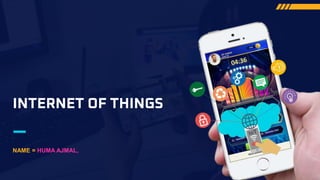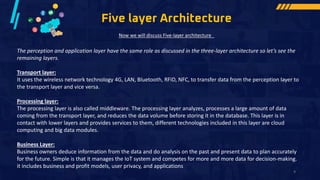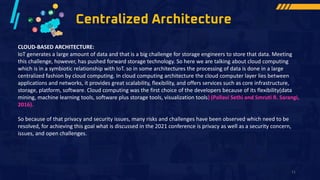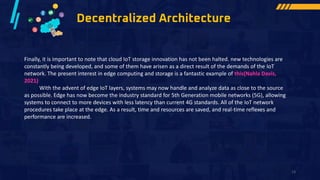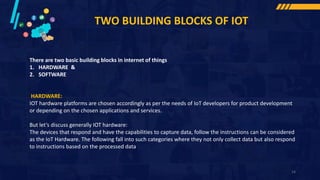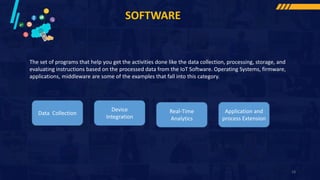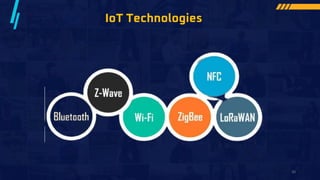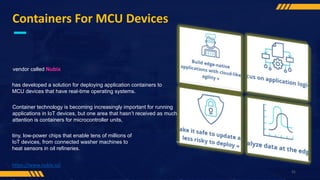The document provides an extensive overview of the Internet of Things (IoT), including its definition, background, key components, architectures, and applications across various sectors such as healthcare, smart homes, and agriculture. It discusses both centralized and decentralized architectures, emphasizing the role of cloud computing and emerging technologies like edge computing and battery-free sensors. Additionally, the document highlights current research and trends in IoT, including security challenges and innovative solutions.
